Back at the end of May this year, I interviewed Jeanne Lyons about the great things they were doing for autistic students at St. Peter Channel in Roswell, GA (north Atlanta suburb) for autstics. In June, I published an article about them running a sensory-friendly Mass for a decade. At the time, we talked a lot about how she catechizes autistic students. We ended up talking most about first confession, hence why that is in the title. My first draft did not include “for First Confession” in the title but I figured that was worth emphasizing as I reviewed it.
I finally got around to publishing this story about how she does Catechesis based on the interview I transcribed back then. I present it as an example that might help other parishes to brainstorm.
As a side note, the reason I pushed through the sensory-friendly Masses was I was writing a chapter for an upcoming Word on Fire book on the topic and wanted published examples of parishes that did this somewhat long term.
The following are excerpts from that interview or discussion.
General Adaptions to Catechesis for Autistics
We first spoke of some general adaptations to Catechesis that Jeanne and the parishioners make to help autistic students learn about the faith.
Fr. Matthew P. Schnieder, LC: [On top of the sensory-friendly Mass,] you also do a special needs catechesis. How does that work here? I know we’ve spoken before, and you spoke of sorting images so young people put images of the Eucharist with Jesus and images of bread with food.
Jeanne Lyons: Yeah, that idea of sorting images came from the Loyola Press guide [add link]. I just broadened it. We have pictures of the Eucharist in different situations: being received during Holy Communion, in a monstrance, being held up by Jesus at the Last Supper, and being held up by a priest at Mass, and a lot of plastic, toy food like a hot dog, vegetables, a slice of bread etc., combined with pictures of ordinary food. We turn it into a game show type of game: Is it Jesus or is Regular Food? We sort the pictures and plastic food onto either a large picture of a regular meal, or onto a large picture of Jesus, and cheer for each other.
Me: What other things do you do for adaptive catechesis beyond that?
Jeanne: You’ll recognize this. It’s from Catechesis of the Good Shepherd (CGS) [a box with various-sized blocks set in order and labeled with Biblical books]. When we stopped having CGS, sadly due to space constraints and the need for weekday afternoon volunteers, I asked to keep as many of the materials that I thought were particularly interesting for my students. So, this represents the Bible and all the books the Bible. In CGS, we use different color coding for the different types of books. They get a page that is a visual like the physical books. I create learning pages, on which we start by coloring in the books of the Bible from which our readings are taken on that particular Sunday, and everyone gets a model from which to copy if they need help with the locating the books from which we’ll be hearing. I make a sticker that summarizes in a few sentences each of the 4 readings for that day: 1st, psalm, 2nd and Gospel. The students can put each sticker close to its corresponding book, so they’ll know, for instance, that this is the Bible book from which the Gospel was taken, and this is what it was about. They might complete their learning pages with a group or with one-on-one support from a volunteer. Then when they take their page home, their families can read through it with them. On the back of the learning pages I create, the main messages of the readings are fleshed out, with space included for matching and placing picture stickers on the page, chosen because they illustrate the stories or the main ideas, providing even more visual support for visual learners. For the younger students, we just do the side on which we match and place the sticker pictures, saying things like, “Look at that man: that’s Ezekiel. Can you point to Ezekiel?” “Look, there’s the Holy Spirit. We don’t know what he looks like, so we have different ways to imagine the Holy Spirit, like a dove, or like fire. Can you fly like a dove?” A little one might also enjoy coloring in the books from which our readings come for that Sunday, using the CGS illustration on the first page, as previously described.
We do a lot of one-on-one, as we often have as many volunteers in the room as students. In our classroom, we have lots of movement opportunities too, so students can work for a short time, then do some bouncing, swaying or swinging, then come back and work for a short time. The goal is that they love coming to Church and learning about our Catholic faith.
Me: That’s what you want to do. Wanting to come to Church is an important aspect for everyone, whether autistic or any kid. You want them to desire going to Mass, not “You must come to Mass.”
J: Yeah, you don’t want Church to be the place where the primary focus is on how long parents can get a child to sit still, when some children’s bodies need movement opportunities in order to be able to pay attention and begin to learn. Church should be a place where even children whose sensory systems require more movement opportunities can experience the welcoming love of Jesus.
We also try to incorporate a child or adult’s special interests. We always ask the parents what is it that their child especially loves to do, particularly for folks on the autism spectrum. We try to make sure there is something related to that special interest in the room.
The Sacrament of Confession or Reconciliation
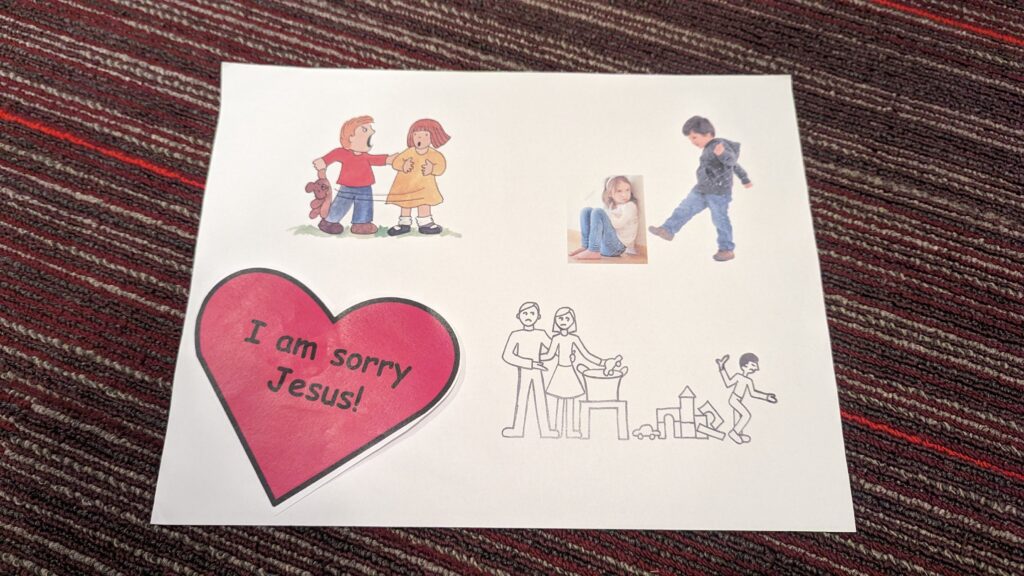
We spoke extensively about how to help autistic students do their first reconciliation. Jeanne started off on this without a direct question from me.
Jeanne: I wanted to show you this. Probably the most difficult thing is getting kids ready for the sacrament of reconciliation. It’s especially tough for those who struggle to put words together or don’t have words at all. I wanted to show you what I have come up with. I have a couple of different examples. We’ll do reconciliation with pictures. I’ll talk with the parents and ask for three things their child does that would be sins and that they’d like them to work on – things that the parents feel their child most likely understands are unloving choices. I’ll find pictures to illustrate each sin and put the 3 pictures on a piece of paper. I’ll also have a red heart shape that includes the words, “I’m sorry, Jesus” on it, taped to the page. I had one little girl – talking about special interests – who just loved cutting with scissors. Instead of making an “I’m sorry” heart shape ahead of time, for her to hand the priest, I had her cut out her own “I’m sorry, Jesus” heart that I’d drawn on her sheet of paper. She brought scissors to her first reconciliation. (Of course, she had shown us that she could consistently use safety scissors safely.) I’ll go over the individual’s sin picture page with the priest ahead of time. After the student and I have practiced many times, they’ll go to the Sacrament of Reconciliation with the priest, and he’ll point to one of the pictures saying, “Oh, look, this child grabbed a toy away from the other child. This other child is really upset. Do you ever take toys from your brother or sister?” The child can do a nod, perhaps say “yes” or “no,” or tap a priest’s outstretched “yes hand” or “no hand” to give their answer. They’ll do that with each of the pictures and then the priest will ask the child to hand him the “I’m sorry, Jesus” heart. They’ll read it together. So many of my students begin to read before they can converse.
Me: That’s not too unusual [for autistics].
Jeanne: So, some of them can go ahead and read the words on the heart out loud, or the priest will say it and they echo. Or he might show it to them and read it to them. Then they nod to indicate assent. I love how Monsignor takes the taped-on “I’m sorry” heart, sometimes taping it onto his stole, and tells the child that it’s his job as a priest to let Jesus know that they are sorry. Some children need to be shown a picture of a priest giving absolution with a hand extended in a child’s direction, so the child can understand that there’s no need to flinch away from the priest’s gesture of prayer.
For some of my students, I don’t want them practicing over and over again “Do you do this bad action?” “Do you do that bad action?” Because then they almost get into the idea of “Yup, that’s what I do.” My son was so literal, that I know if I had practiced just the acknowledgement of the negative things, the sins, with him, without having a way of showing the positive action that should be done instead, this might encourage him to keep doing the negative action, like not obeying when we asked him to pick up his toys.
So for many students, I’ll make a lift the flap page, where the top flap has the sin (for example, a picture of a child unsafely climbing up high on the furniture) and under the flap it has something like “I can be safe and keep my feet on the floor,” accompanied by a picture of a child doing so. I design the reconciliation sheets specific to each child. The priest will peel off the taped on top flap for each sin, and leave behind the page of positive actions. The flaps with pictures of sins are the parts that gets crumpled and thrown away by the priest, to help the child understand that his or her sins are gone.
Some kids are able to write out their own list of sins, or draw their own pictures of their sins, to take to the Sacrament of Reconciliation.
Me: For first reconciliation, you need a kid who can tell right and wrong, and has some control over their own behavior. That might be more delayed than preparing for first Communion for a lot of kids with different disabilities like autism, Down’s syndrome, etc.
Jeanne: Yes, my son received his first Communion before he did his first reconciliation. From the ages of 5 to 13, he used to suffer from horrible meltdowns. They would happen at home, after school with me, after he had worked so hard to hold it together at school. Then, after a meltdown, he would be so remorseful and say terrible things about himself. I had to find a very understanding priest who wouldn’t be horrified that my son would be likely to say things like, “I got really mad and tried to throw something at my mom.” My son’s kind and gentle doctor had to carefully try many different medications for my son until we finally found one that worked as my son’s “surge protector” when he was 13. The doctor had very slowly increased the dosage, watching for any unwanted side effects. Then one day after school, my son said, “I’m really mad. But don’t worry Mom, for some reason, I don’t feel the need to hit.” We had finally found the right dose of the right medicine.
Me: One thing I’ve said before and I think is clear in the rules: You need to communicate your sins to a priest. Usually, that is saying them, but there is no requirement that you say them, so if you are non-verbal or nervous, it’s fine to make a list and hand it to the priest. Handing him the list communicates your sins to him perfectly fine. It’s just like if I was better at reading sign language, I could go to the Deaf parish, and they could confess in ASL. They would communicate to me their sins. I don’t have sufficient sign language to do this right now.
Jeanne: Yes. Another thing I learned is that so many of my students would come out of confession and their parents would say, “What is your penance?” But often even the ones who were verbal could not remember their penance, so I ask the priests who are comfortable with it to write the penance on a Post-it note, or they can give the child a sheet of paper with a prayer like the Our Father or Hail Mary or Glory Be typed on it. (I might even print out some of these prayer sheets ahead of time, from which the priest can choose.) When a child comes back to their parent with one of these prayer sheets in his or her hand, the parent can understand that this is the child’s penance, and can help the child read the prayer, if help is needed.
Monsignor Peter wrote the most beautifully simplified Act of Contrition, and he lets the parents know that this can be used instead of a longer version. This helps a lot of children, not just the ones who are my students. Memorizing the prayer is great, but it’s fine for children who can read, to read it from a page, or repeat it line by line, echoing the priest.
The person in charge of the Disability Ministry for our Archdiocese said that one of the bishops wrote a letter saying that the First Reconciliation binder I developed was OK for children to use during the Sacrament of Reconciliation. He very kindly added some verbiage to it as well, making wonderful improvements. We developed this for children with special needs, but it has also helped typically-developing children. Parishes quickly find that anything that is done to assist people with developmental disabilities is going to help everyone.
Youth Group for Autistics
Jeanne and the team at St. Peter Channel don’t stop with sacramental preparation but have a youth group for older autistics. One of the unfortunate effects of me moving away from Atlanta on short notice was that I never got to attend it myself. Jeanne brought this up in another part, but I think it is worth pointing out here.
Jeanne: The teen and adult’s group is called Crossbeams Bible Study. The group for (usually younger) individuals who need more movement opportunities is called the Shine Class. For Crossbeams, I will do PowerPoint slides of all the readings, except I’ll use the translation used in children’s lectionary and will add lots of pictures to help illustrate the readings.
For both Shine and Crossbeams, we incorporate a lot of music. And for the little ones, music is especially powerful. When my son was little, I’d say, “Put on your shoes; we’re going to the grocery store,” and he would often not do it. But I found if I sang the same words – if I made up any goofy little tune – those same words just got through to him more efficiently, and he was better able to follow directions.
Ramp Effect Helping All
Partway through our discussion I was inspired to note the following to which Jeanne agreed. It can be an inspiration for all of us in disability ministry.
Me: You hear about the ramp effect at times. Your entrance is at ground level, but many are a few steps up. I know a parish where they built it as one big ramp. They might have built it because the ADA [Americans with Disabilities Act] requires it, but so many moms bringing kids in strollers or elderly people with a cane will take that ramp and it helps them out too.
Conclusion
We need more parishes doing things like this. I don’t think necessarily that each one is going to be exactly the same. St. Peter Channel gives us a template, not a strict rule. As society becomes more aware of autistics, we need to include them in all levels and activities of the Church.

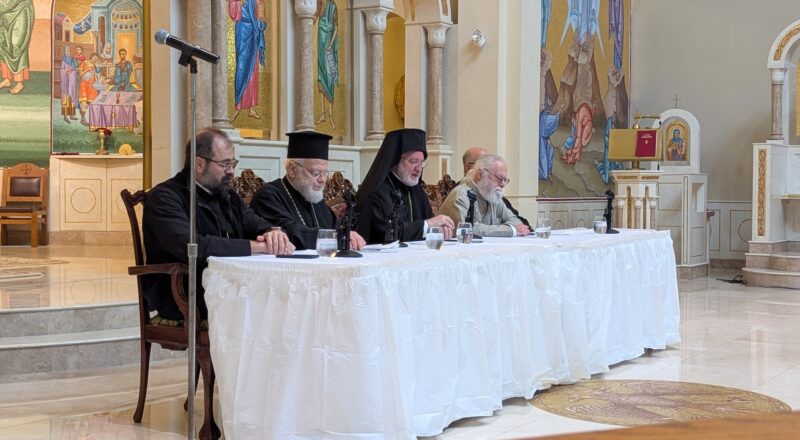
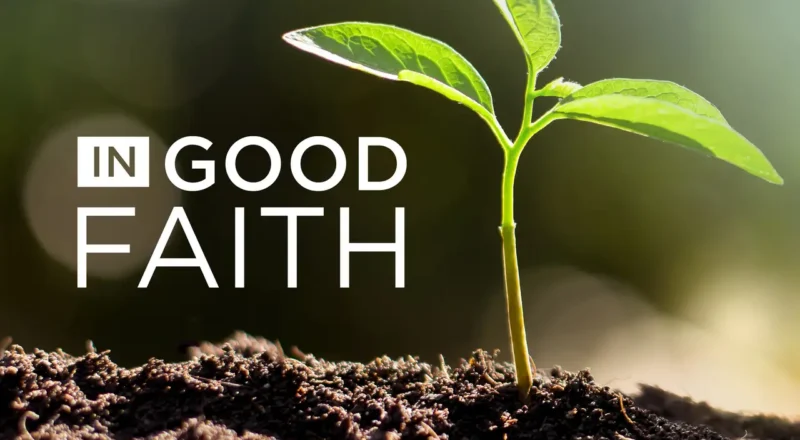

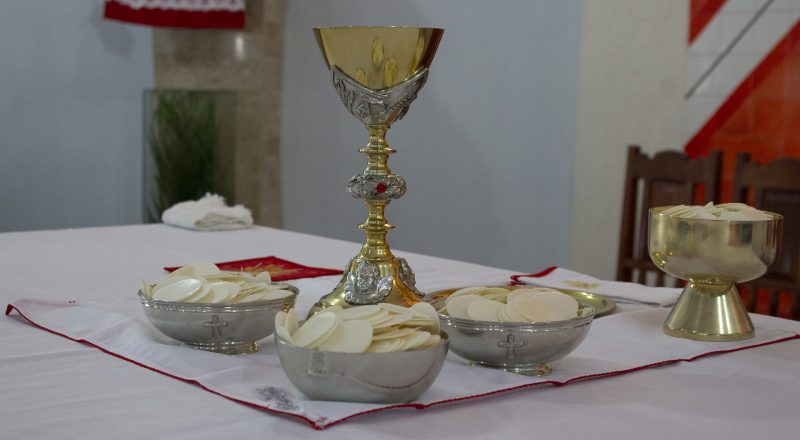
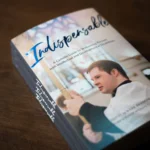


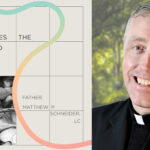

[…] Update: in the same interview, we also talked about Catechesis for autistic young people. I posted that in a later article. […]
[…] Open the full article on the frmatthewlc.com site […]